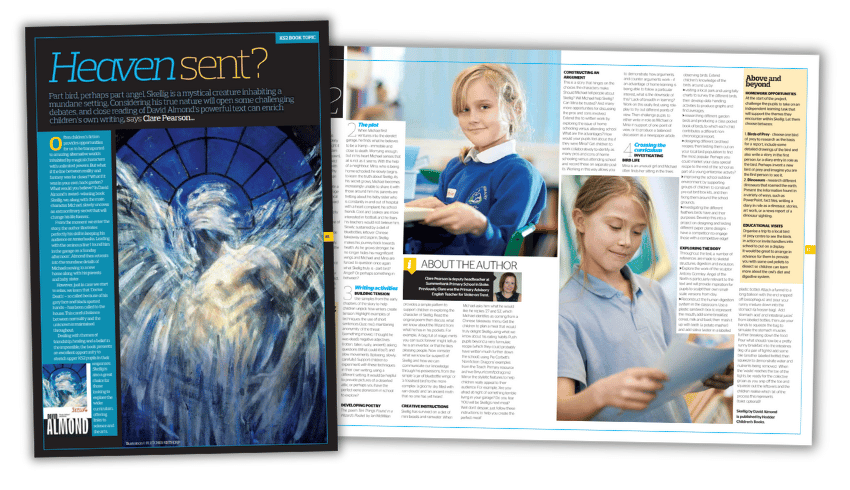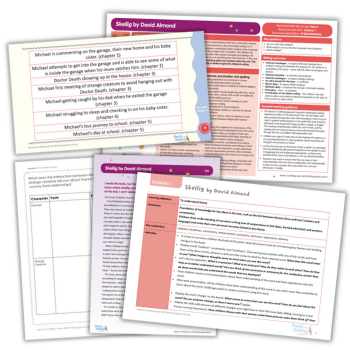Use David Almond’s book Skellig to ignite learning in your KS2 classroom with these activities and ideas…
Skelling KS2 planning

Part bird, perhaps part angel, Skellig is a mystical creature inhabiting a mundane setting. Considering his true nature will open some challenging debates, and close reading of David Almond’s powerful text can enrich children’s own writing. This PDF features lots of cross-curricular activities based on the book…
Often children’s fiction provides opportunities for us to be transported to amazing alternative worlds inhabited by magical characters with unlimited powers.
But what if the line between reality and fantasy was far closer? What if it was in your own back garden? What would you believe?
In David Almond’s award-winning book Skellig, we, along with the main character Michael, slowly uncover an extraordinary secret that will change his life forever.
From the moment we enter the story, the author illustrates perfectly his skill in keeping his audience on tenterhooks. Leading with the ominous line ‘I found him in the garage on a Sunday afternoon’, Almond then retreats into the mundane details of Michael moving to a new home along with his parents and baby sister.
However, just in case we start to relax, we learn that ‘Doctor Death’ – so called because of his grey face and black spotted hands – has been called to the house.
This careful balance between normality and the unknown is maintained throughout. Dealing with themes of friendship, healing and a belief in the impossible, the book presents an excellent opportunity to stretch upper KS2 pupils in their responses.
Skellig is also a great choice for those looking to explore the wider curriculum, offering links to science and the arts.
Read in to Writing Year 6 unit sample
This free one-week sample is based on the Skellig book by David Almond and is perfect for Year 6. It explores the first five chapters of the novel.
The download contains:
- Unit overview
- Five sessions of planning
- Skellig book blurb
- Character analysis worksheet
- Quotes worksheet
- Scenes with Michael worksheet
- Icarus and Daedalus myth
- Article by author David Almond
- Teaching slides
This unit will develop children’s understanding of the story, characters, themes and language. The unit teaches reading, including fluency, vocabulary and comprehension, and meaningful writing, for a range of form, purpose and audience.
Embed the teaching of grammar and punctuation within analysis of the language and structures used to tell the story. The activities explore the effect these might have on readers.
Teach children to apply what they have learnt to their own writing, making choices to affect their reader’s thoughts and feelings.
All learning in the unit builds towards a final piece of writing, where the children can use everything they have learned, in this case to write a story of their own.
What is Read in to Writing?
Read in to Writing from Rising Stars is a whole-text teaching method. By studying classic and contemporary children’s literature, children develop their reading skills and understanding. This helps them to approach their writing with confidence and greater depth.
Each unit lasts between 2-6 weeks and provides all the editable planning and teaching materials for a whole book.
Other books covered include Wonder by RJ Palacio and The Boy at the Back of the Class by Onjali Q Rauf.














